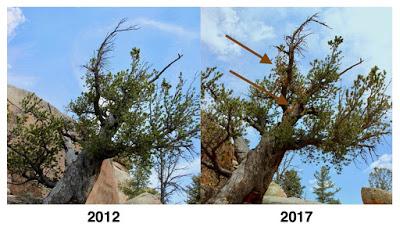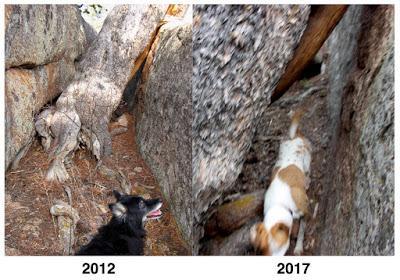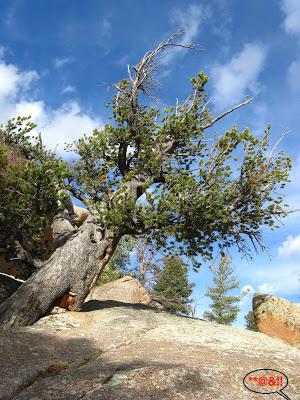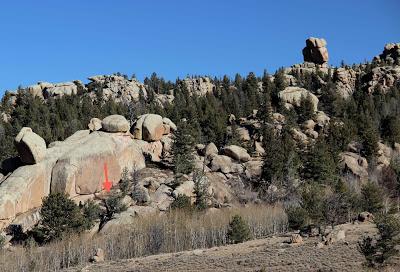
Five years ago, I came across a blog post about a young sycamore (maple in the USA) emerging from a street drain! It was discovered by Lucy Corrander, a member of a loose-knit group of tree-followers. Lucy informally “led” the group by periodically listing recent tree-following posts. Anticipating tree camaraderie, I decided to follow a limber pine (Pinus flexilis). Like Lucy’s sycamore, it started life in a dark out-of-the-way place—a five-foot-deep crevice in a granite outcrop. That must have been many hundreds of years ago, judging by its situation and size.
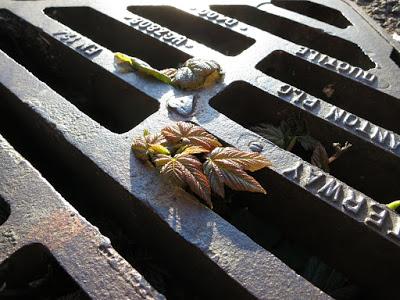
Sycamore (maple) emerging from its dark wet home in 2012. Lucy reports it’s still growing there!
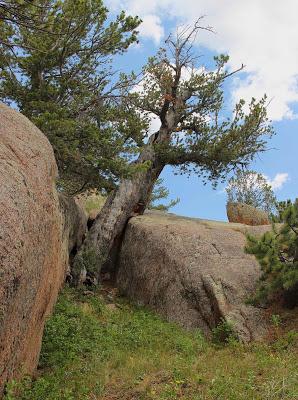
Limber pine emerging from a granite crevice near Blair Picnic Area in the southern Laramie Mountains.
There were enough tree-followers that Lucy organized monthly gatherings facilitated by Mister Linky, now hosted by The Squirrelbasket. In the years since, I’ve followed a cottonwood, a willow and a serviceberry—always interesting and fun.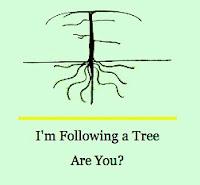
Consider joining us!
Though there’s no obligation, I’ve mostly been diligent in my monthly reporting … until this year. That’s because I decided to follow a Powell palmetto, which has been extinct for millions of years. The beautiful fossilized frond in a hallway in the Geology building was irresistible. But I soon ran out of palm and fossil stories, and work and weather have kept me from visiting its lithified habitat on the other side of Wyoming. In the meantime, I’ve wandered from tree to tree. This month I visited my old friend, the limber pine.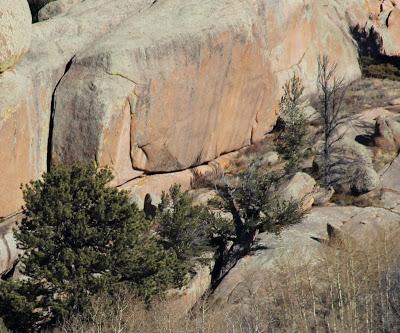
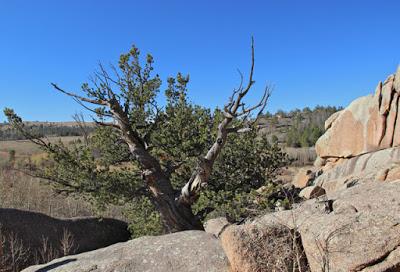
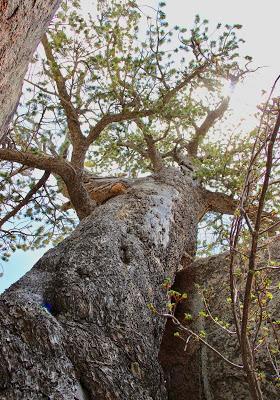

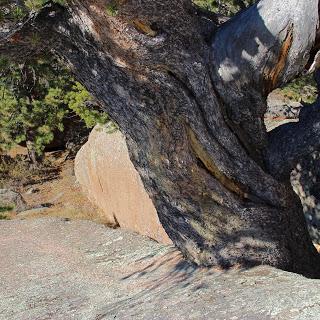
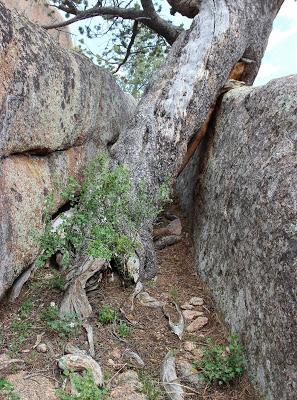
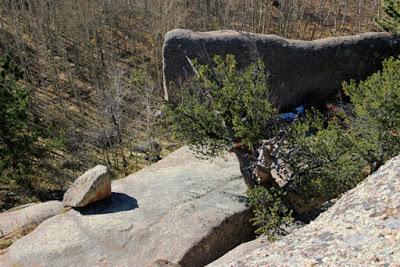
The limber pine looks healthiest viewed from above.
As for change … there were some obvious ones. Several minor branches covered in green needles five years ago are now brown.